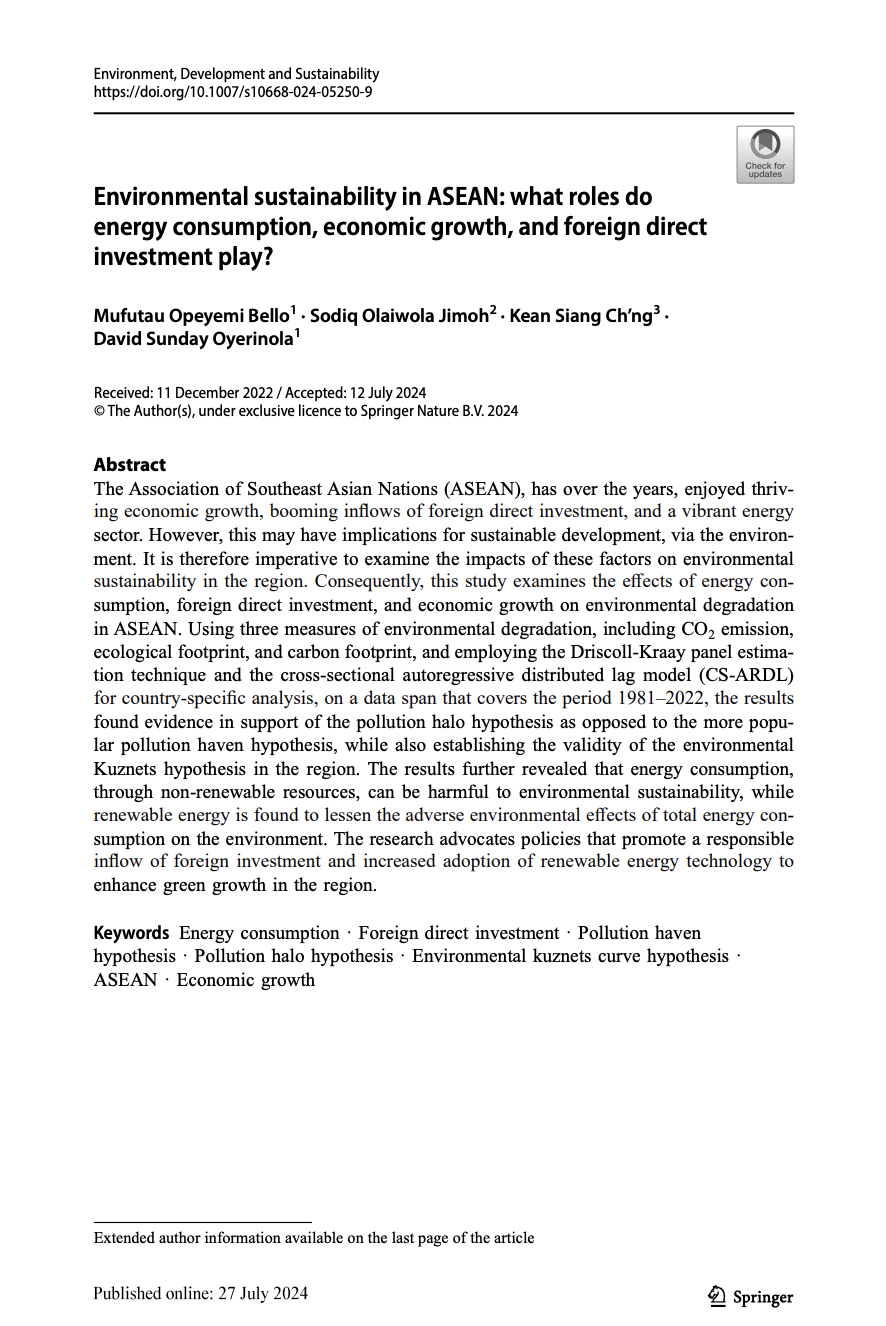
Keyword(s)
Author(s)
Mufutau Opeyemi Bello, Sodiq Olaiwola Jimoh, Kean Siang Ch’ng, David Sunday Oyerinola
Country(ies)
Publisher
Published Date
Access
DOI
The Association of Southeast Asian Nations (ASEAN), has over the years, enjoyed thriving economic growth, booming inflows of foreign direct investment, and a vibrant energy sector. However, this may have implications for sustainable development, via the environment. It is therefore imperative to examine the impacts of these factors on environmental sustainability in the region. Consequently, this study examines the effects of energy consumption, foreign direct investment, and economic growth on environmental degradation in ASEAN. Using three measures of environmental degradation, including CO2 emission, ecological footprint, and carbon footprint, and employing the Driscoll-Kraay panel estimation technique and the cross-sectional autoregressive distributed lag model (CS-ARDL) for country-specific analysis, on a data span that covers the period 1981–2022, the results found evidence in support of the pollution halo hypothesis as opposed to the more popular pollution haven hypothesis, while also establishing the validity of the environmental Kuznets hypothesis in the region. The results further revealed that energy consumption, through non-renewable resources, can be harmful to environmental sustainability, while renewable energy is found to lessen the adverse environmental effects of total energy consumption on the environment. The research advocates policies that promote a responsible inflow of foreign investment and increased adoption of renewable energy technology to enhance green growth in the region.